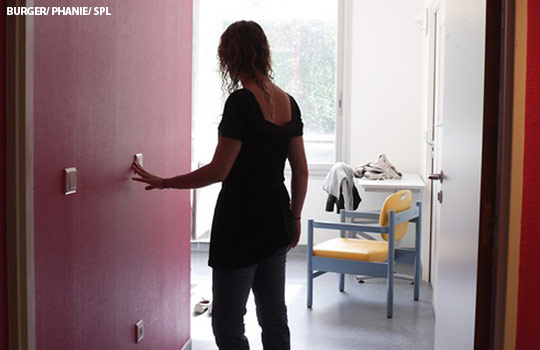 Concern over women’s mental health is growing. Suicide among women in the UK is at its highest rate since 2005 and recent data show that young women are the highest risk group for mental health problems.
Concern over women’s mental health is growing. Suicide among women in the UK is at its highest rate since 2005 and recent data show that young women are the highest risk group for mental health problems.
Among the women and girls who face mental illness, some—those with the most severe conditions—will be admitted to inpatient wards for treatment. However, Agenda’s latest research on restraint has shown that many mental health units are not always the therapeutic environments we might hope they’d be, but places where physical restraint against women and girls is routine.
Agenda, an alliance of more than 70 organisations campaigning for women and girls at risk, is particularly concerned about this because of the close links between women and girls’ mental health and their experiences of abuse and trauma.
More than half of women who have mental health problems have experienced abuse—and the links are particularly pronounced for those with more severe illnesses. So to be physically restrained—especially face-down, but also in other positions—has the potential to retraumatise those who have suffered abuse.
That is why if we are serious about truly helping women and girls with mental health problems, physical restraint must be minimised and the outdated and potentially dangerous face-down position should be eliminated from practice altogether.
This is not a new argument. Government guidance issued in 2014 recommended that face-down restraint should not be used at all and physical restraint used only as a last resort. But our research has highlighted that this is far from the case in many trusts.
Our figures—obtained through a freedom of information request sent to all trusts in England—showed that one in five women and girls admitted to mental health facilities were physically restrained. In some trusts, this was as high as three quarters.
The use of face-down restraint also continues to be widespread, with women and girls restrained in this way on thousands of occasions. The figures in Child and Adolescent Mental Health Services (CAMHS) showed a particularly worrying gender disparity in the use of restraint.
More than 17% (397) of girls were physically restrained compared with less than 13% (169) of boys. And more than eight per cent (180) of girls were restrained face-down compared with less than six per cent (72) of boys. There were 2269 incidents of face-down restraint against girls, compared with 285 against boys. This suggests that some female patients were restrained several times during a typical admission. And while girls made up 63.5% of admissions, they were subject to 88.8% of incidents of face-down restraint.
Being physically held down—often in front of others and with clothes potentially pulled out of place—can be an extremely humiliating, as well as frightening, experience. Not only that, but restraint is often carried out by male nurses, another factor that compounds the fear and trauma of those women and girls who have histories of abuse and violence at the hands of men. As such, the use of restraint is unlikely to improve mental wellbeing in the long term and will often do the opposite.
Mental health nurses undoubtedly have an extremely difficult job to do in what are very challenging circumstances, with increasing pressures on time and staffing. However, that should not mean that restraint should be routine practice—and especially not against women and girls who have experienced abuse.
Some mental health trusts have clearly made an effort to reduce restraint, with a few appearing to have almost eliminated physical restraint. A couple of CAMHS units have stopped using face-down restraint altogether.
A recent study (not yet published) in the northwest of England, led by Professor Joy Duxbury from the University of Central Lancashire, trialled the use of the ResTrain Yourself approach aimed at reducing restraint. This included introducing trauma informed care, working in partnership with patients, improving communication styles, changing the ward environment, and having debriefs after incidents.
Over the course of just over two years, four of the seven trusts had reduced restraint by 40%. Overall, restraint rates across the seven trusts were 21% lower than on comparator wards. Patients and staff also reported feeling more positive. This evidence shows that change is possible, and alternative de-escalation techniques can and do work.
Of course, there may be exceptional circumstances in which restraint is necessary to prevent harm to a patient or those around them. But such circumstances should be exceptional, not routine.
Women and girls are admitted to mental health units to get care and support when they are at their most vulnerable. To help them get better, there needs to be a recognition of women and girls’ specific needs. Their histories of trauma must be fully acknowledged and support given to help them recover from their traumatic past and to tackle the underlying difficulties they face.
With this in mind, it is clear that there is no place for face-down restraint in modern mental health settings and physical restraint should be used only as a last resort. Only then can women and girls get the care and support they need in a truly safe and therapeutic environment.
Katharine Sacks-Jones became the inaugural director of Agenda, the alliance for women and girls at risk, in May 2015. She brings 15 years of experience working across policy, campaigns, public affairs, and parliament. Before joining Agenda, Katharine led the policy and campaign team at Crisis.
Competing interests: I have read and understood BMJ policy on declaration of interests and declare that I have no competing interests.
